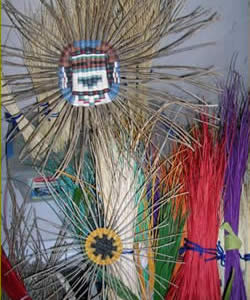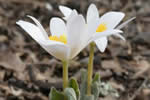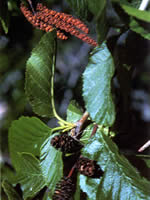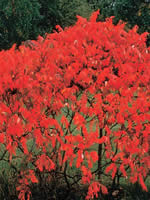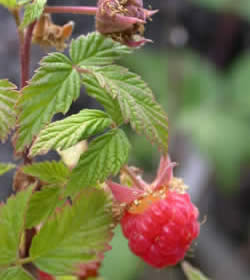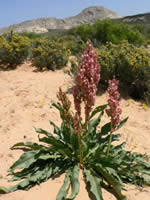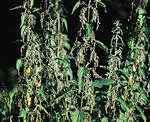- Forest Service Home
- Celebrating Wildflowers
- Home
- About Us
- News & Events
- Wildflower Viewing Areas
- Wildflower Ethics
- Forest Service Regions
- Just For Kids
- Teacher Resources
- Pollinators
- Native Gardening
- Native Plant Materials
- Invasive Plants
- Rare Plants
- Beauty of It All
- Interesting Plants
- Unique Communities
- Ethnobotany
- Special Features
- Wildflower Links
- Contact Us
USDA Forest Service Celebrating Wildflowers
|
|
|
Native Plant Dyes
Plants have been used for natural dyeing since before recorded history. The staining properties of plants were noted by humans and have been used to obtain and retain these colors from plants throughout history. Native plants and their resultant dyes have been used to enhance people's lives through decoration of animal skins, fabrics, crafts, hair, and even their bodies. Types of DyesNatural dye materials that produce durable, strong colors and do not require the addition of other substances to obtain the desired outcome are called substantive or direct dyes. Sumac (Rhus spp.) and walnut (Juglans spp.) are native plant examples of direct dyes. Because these species are high in tannic acid, they do not require additional substances to be added for the dye to attach to fibers and form a durable bond. Dyes that need this type of assistance are called adjective or mordant dyes. MordantsMordants are water-soluble chemicals, usually metallic salts, which create a bond between dye and fiber thus increasing the adherence of various dyes to the item being dyed. The actual color one gets from a natural dye depends not only on the source of the dye but also on the mordant, and the item being dyed. Most mordant recipes also call for the addition of cream of tartar or tartaric acid. Use of this readily available spice is important because it reduces fiber stiffness that can occur because of mordanting. It can also increase brightness.
Plants Used for DyesThroughout the world, evidence of natural dyeing in many ancient cultures has been discovered. Textile fragments dyed red from roots of an old world species of madder (Rubia tinctoria) have been found in Pakistan, dating around 2500 BC. Similar dyed fabrics were found in the tombs of Egypt. Fun Facts
Native North American Plants Used for DyesEuropean settlers in North America learned from Native Americans to use native plants to produce various colored dyes (see Table 2).
Bloodroot (Sanguinaria canadensis)Bloodroot (Sanguinaria canadensis) was used to produce red dyes. Green dyes were made from algae and yellow dyes were made from lichens. Early colonists discovered that colors produced by the Native Americans quickly faded, thus suggesting that mordants may not have been used. Mountain alder (Alnus incana)This small, riparian tree has been used by many native tribes to make a brown, red-brown, or orange-red dye to darken hides, stain bark used in basketry and dye porcupine quills. Inner bark was used to make yellow dye. Outer bark was used to make a flaming red hair dye. Some tribes mixed this species with grindstone dust or black earth to make a black dye. Bark was used to wash and restore the brown color to old moccasins. In the western United States, various layers of red alder bark, Alnus rubra, yield red, red-brown, brown, orange, and yellow dyes. These colors have been used to stain baskets, hides, moccasins, hair, quills, fishnets, canoes, cloth, and other items. Smooth sumac (Rhus glabra)This deciduous shrub is a widely distributed throughout most of the contiguous United States. It is readily recognized by its thicket-forming habit, milky sap, compound leaves, and dense, terminal panicles of bright red drupes. A variety of dye colors can be obtained from different parts of the plant depending on the mordant used. The leaves are rich in tannin and can be used as a direct dye. Leaves can be collected as they fall in the autumn and used as a brown dye. The twigs and root are also rich in tannin. A black and a red dye can be obtained from the fruit. A black dye is obtained from the leaves, bark, and roots. An orange or yellow dye is obtained from the roots harvested in spring. A light yellow dye is obtained from the pulp of the stems. Butternut (Juglans cinerea)This tree native to the eastern United States was important as a food and dye source. Native Americans used the bark to make a brown dye and young roots to make a black dye. Using an iron mordant, brown dye can be changed to a charcoal or gray color. Fun Facts
Rubus
The genus Rubus belongs to the rose family. Common names include raspberry, blackberry, blackcap, and thimbleberry. Varieties of blackberry include dewberry, boysenberry, and loganberry. This group consists of erect, arching or trailing, deciduous and evergreen shrubs found wild in Europe, North America, and Asia. These berries are actually aggregate fruits, which means they are composed of individual drupelets, held together by almost invisible hairs. Some berry canes may be armed with formidable spines and make great security hedges, while others may be nearly spineless. All parts of the blackberry plant (berries, leaves, canes) yield dye colors.
Did You Know?
For More Information
|
||||||||||||||||||||||||||||||||||||||||||||||||||||||||||||||||||||||||||||||||||||||
| NOTE: PDF format links require the Adobe Acrobat Reader to view. | ||||||||||||||||||||||||||||||||||||||||||||||||||||||||||||||||||||||||||||||||||||||
| top | Disclaimers | FOIA | Privacy Policy | Quality of Information | Photo Credits & Use |
Location: http://www.fs.fed.us/wildflowers/ethnobotany/dyes.shtml
Last modified: Wednesday, 13-Oct-2010 14:31:11 EDT
